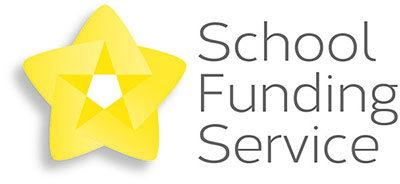 The importance of guidance notes.
The importance of guidance notes.
OK, I’m going to say it – bid writing can be a time consuming task.
Gathering together your ideas, research and evidence takes time. Planning out your answers to questions takes times. Crafting those answers into well-structured, coherent and persuasive responses on paper takes time.
But it can also be a greatly rewarding task too. The way I look at it is like this: if you’re investing your time in bid writing anyway, you need to ensure you do everything you can to maximise your chance of success, even if that means doing a little extra work. It’ll pay off in the end.
One of those ways, which I’m highlighting in this blog, is to read the guidance notes.
What are guidance notes?
Guidance notes, or guidelines or application notes as they are sometimes called, signpost the prospective bidder through the application process. They provide instructions for you to assess your organisation’s eligibility and your project’s suitability for the grant. They also provide information about the current priorities and interests of the fund. This gives you clues as to what application reviewers will be looking for when they read your bid.
Someone from the Big Lottery Fund once told me that the application form for the Awards for All programme is downloaded twice as many times as the guidance notes for the same grant. Does that mean that people aren’t reading the guidance notes? Quite possibly, they said, given that they receive many bids that simply don’t hit the straightforward criteria laid out in the guidance notes. These bids are either rejected or sent back – this can be disheartening for the writer and reflect badly on your organisation.
Why should you read the guidance notes?
1. Avoid wasting your time.
If the grant is not right for your organisation or your project, there’s no point spending your time writing a bid for it to be rejected. Guidance notes help you assess your eligibility and chance of success. Focus your attention on a grant programme that is right for you.
2. Avoid wasting the funder’s time.
Reading the guidance notes and being sure that this is the right grant for you will also help to prevent time wasting for the funder. It takes time and money to assess applications. So make sure you submit a good one, first time round.
3. Make a good first impression.
It’s clear to see when prospective bidders have taken the time to read the guidelines. This gives a good first impression. It shows that you have invested time and effort. Submitting a bid which is way off the mark can reflect badly on your organisation. If you were to apply again in the future, there is a chance that the funder will remember you or have your previous bids on file.
How to read guidance notes
You’ve got to read guidance notes in a particular way to get maximum benefit from them for writing your bid. I always take my own notes under the following headlines. This means I don’t have to keep going back to the guidance notes, which sometimes can be lengthy documents. You then have all the key details to hand.
So, what are you looking for?
Here are some questions that I use when reading guidance notes:
1. Eligibility criteria.
Who can apply? E.g. schools, registered charities, voluntary groups.
What types of project can be funded?
To whom should the project be targeted? E.g. young people, children, older people.
What project costs are eligible? This can include capital and revenue costs, ongoing costs and project/event costs.
Are there geographical restrictions?
Any other restrictions?
2. Priorities and interests
What project themes are funded? E.g. outdoors, welfare, literacy, adult learning.
How does the funder want to make a difference to society?
What keywords are used to describe the funder’s work?
What examples are given of previously funded projects? How are they described? What outcomes did they deliver?
What does the funder want to know about me and my project?
3. Application process
How do I apply?
What information should I include in my bid?
When do I apply?
Do I need to supply any supporting documents?
Can I submit supporting documents of my own choosing?
Using the guidance notes
You can then use your own notes to firstly assess your eligibility and secondly help you write an effective bid.
Before putting pen to paper, make sure that you have all the information, research and evidence that you need to hand.
During the writing process, focus on the keywords and interests of the funder and make sure you address each one in your bid, if relevant.
When you’ve drafted your bid, return to the guidance notes. Read your application again as if you were the application reviewer. Does your bid meet the eligibility criteria? Have you addressed the funder’s interests and priorities? Have you backed up your statements with evidence?
The result? You should have a well-researched and thoughtful bid, one which hits the right eligibility criteria and effectively communicates to the funder why you should be selected to receive funding.
